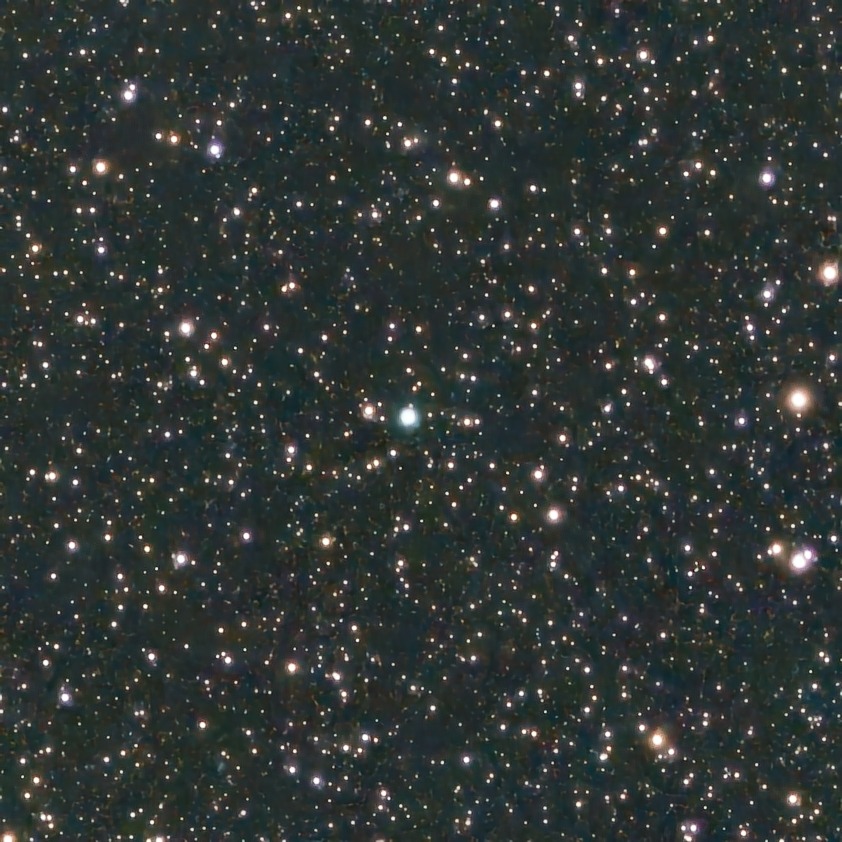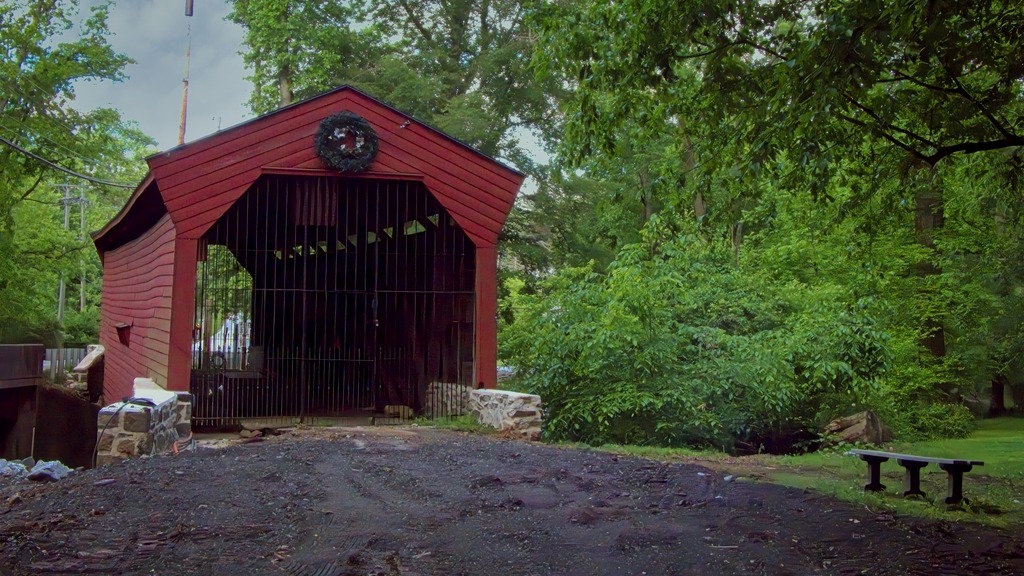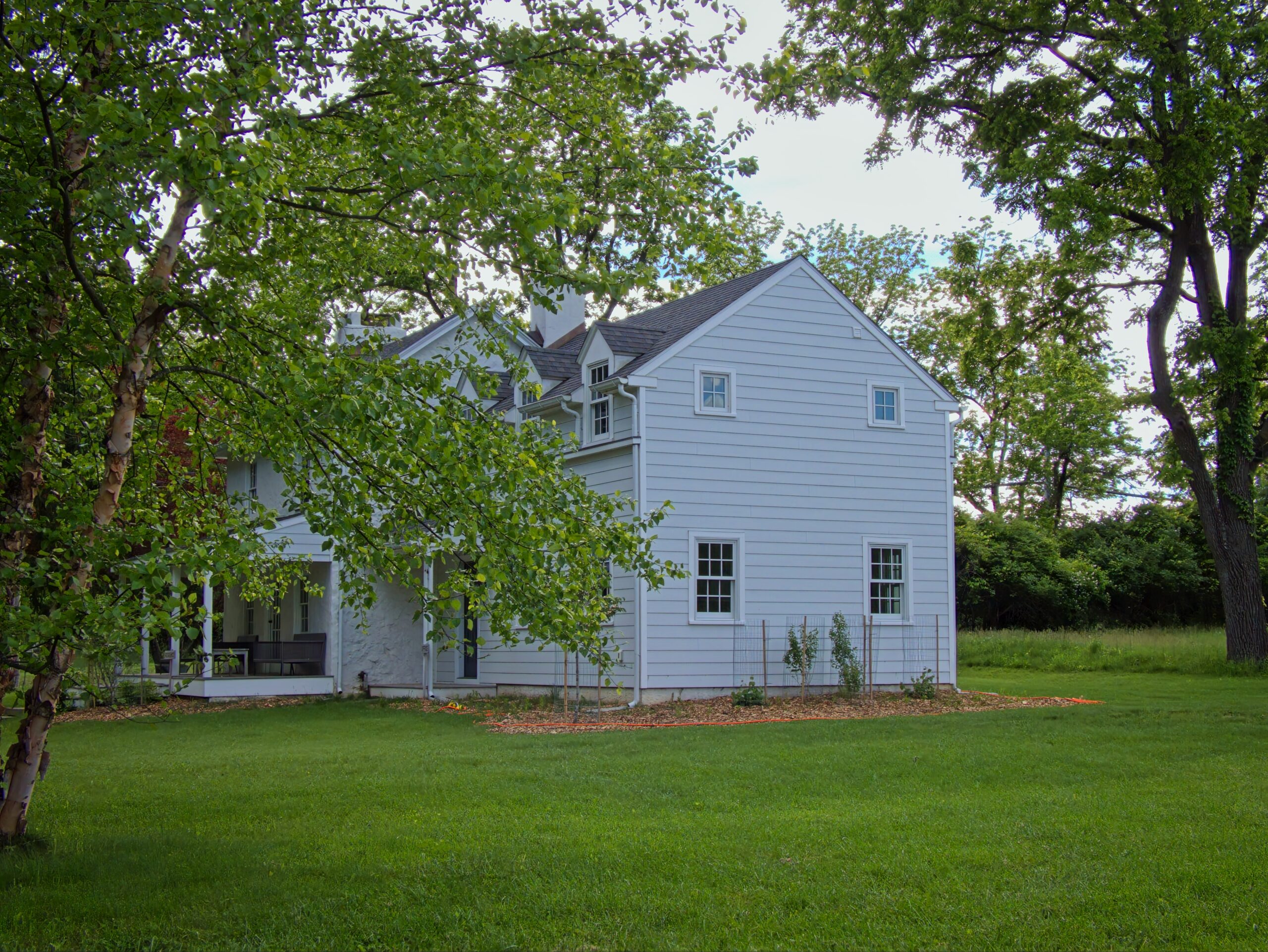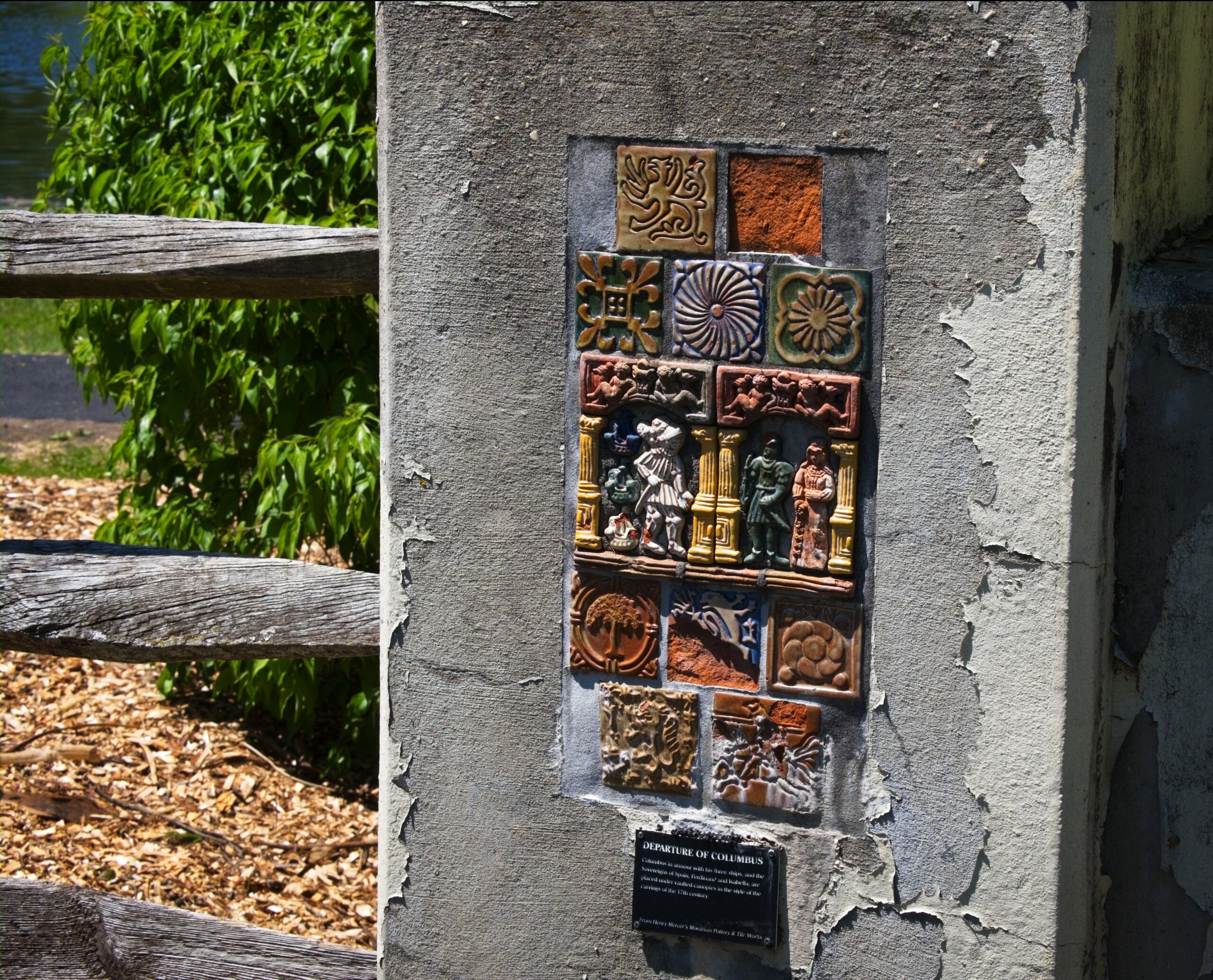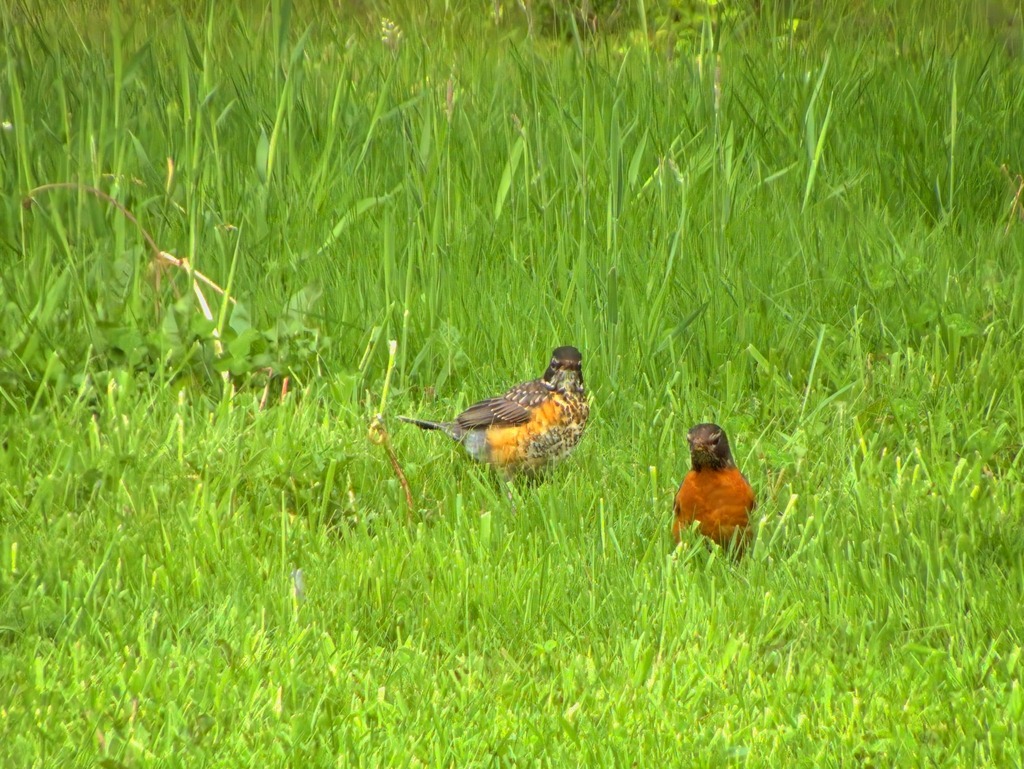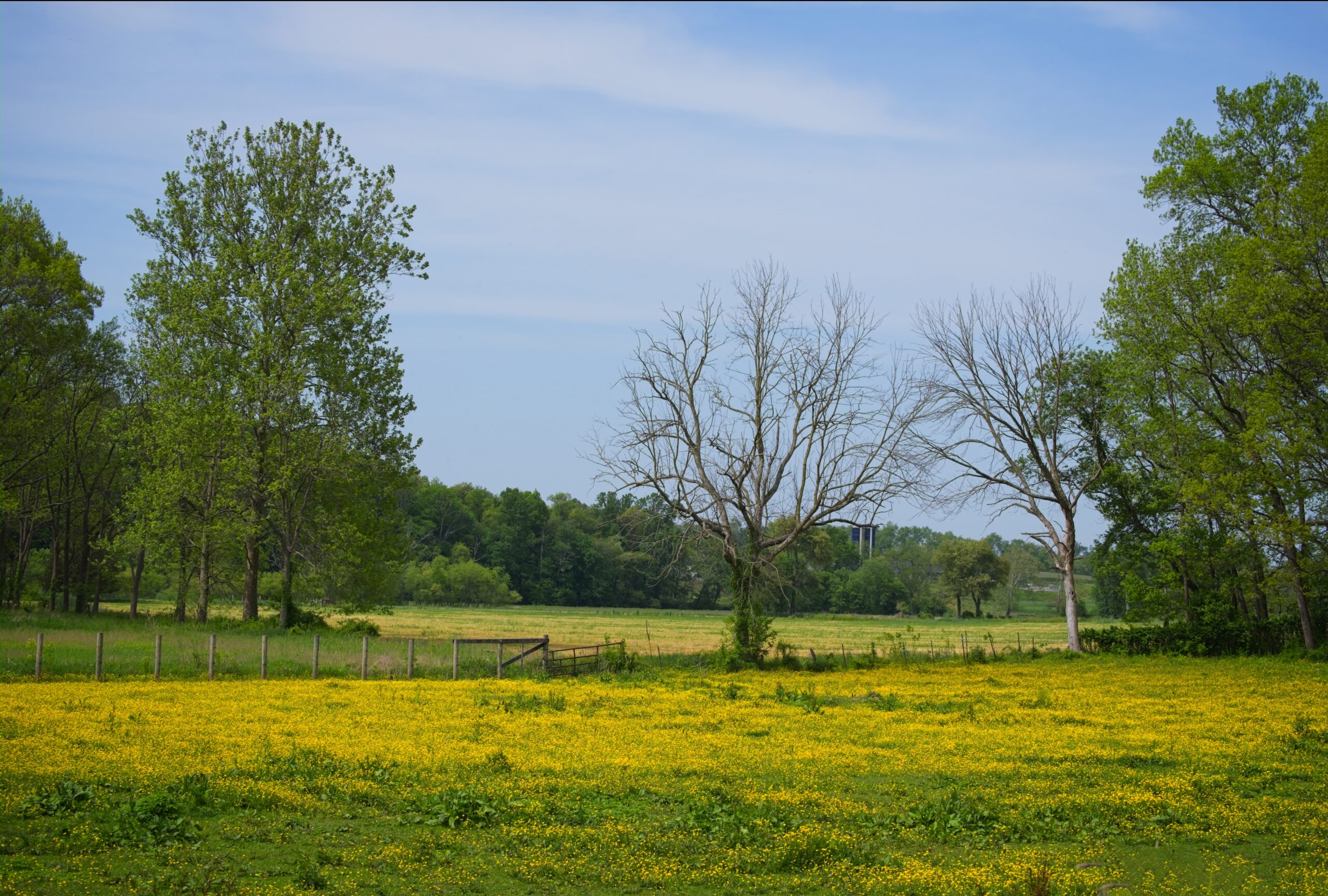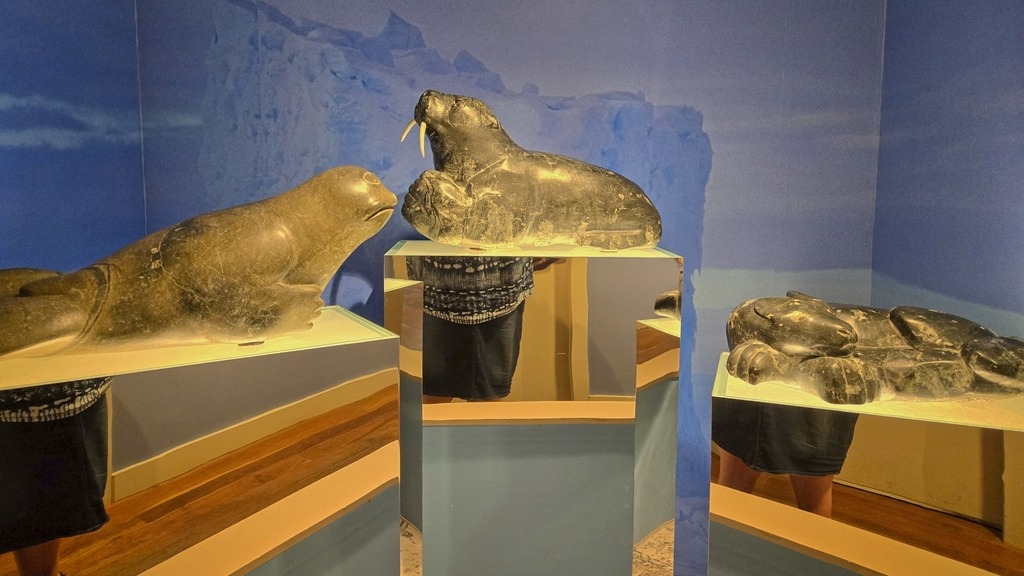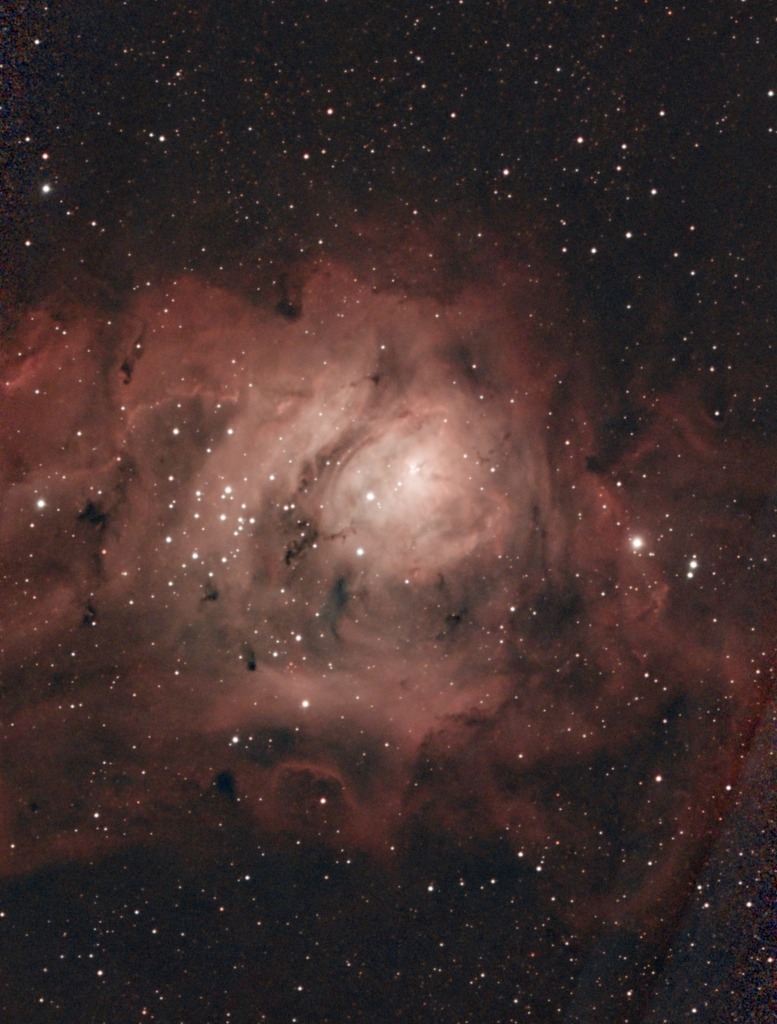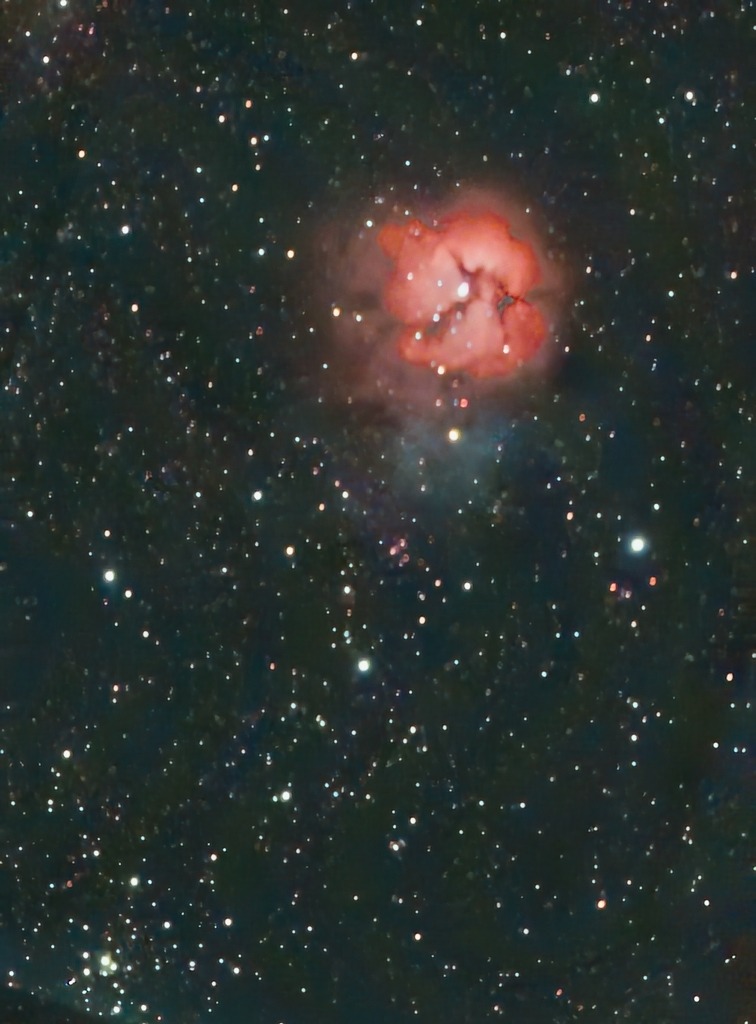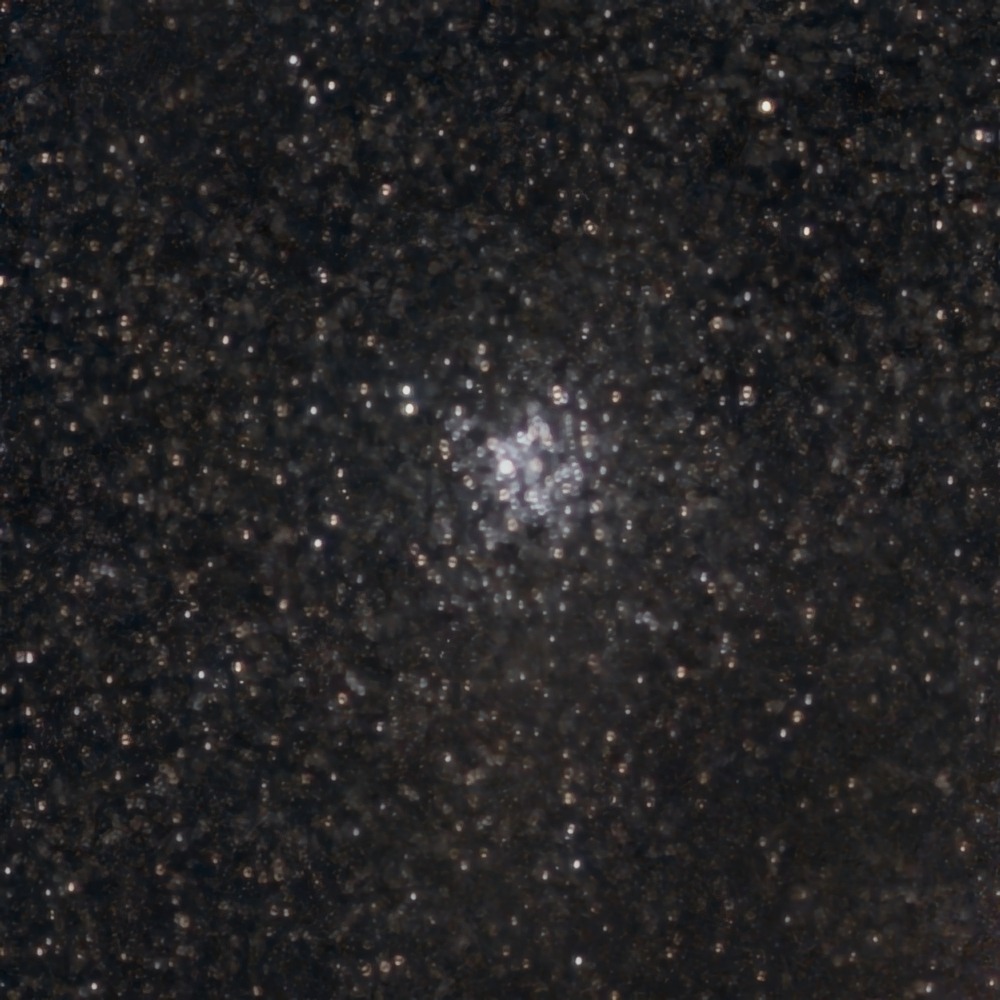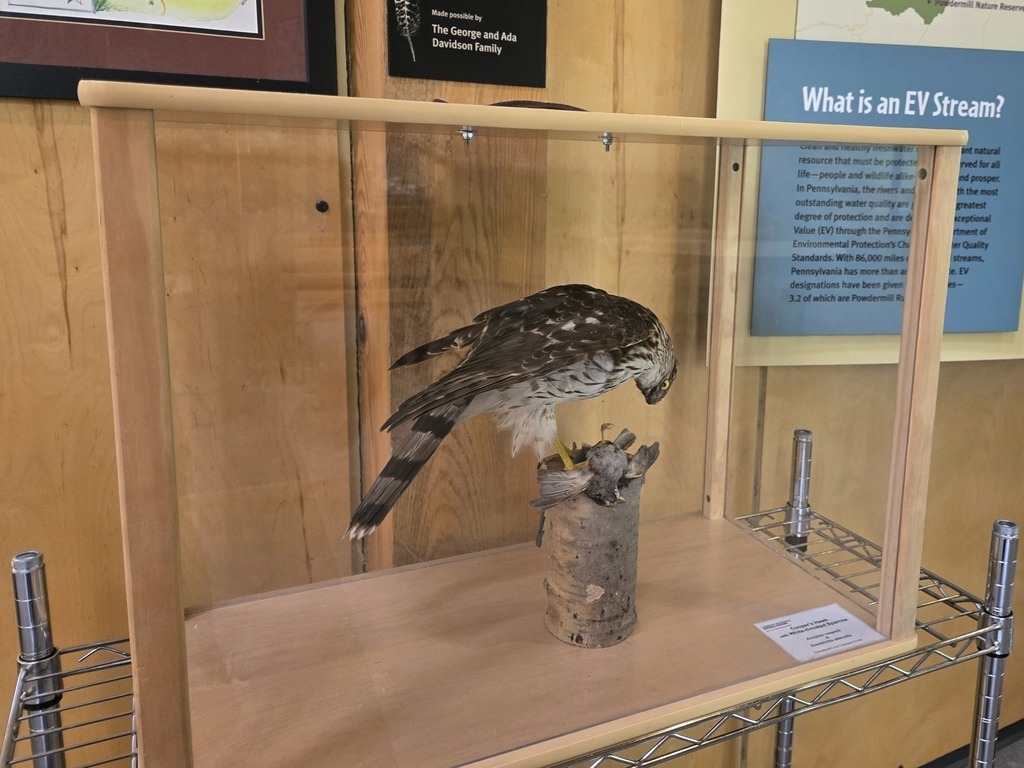The September Hubble 35th Anniversary Challenge offered a large number of targets, and I was able to capture them all. More information about the Challenge can be found here.
The targets were a diverse mix of nebulae, star clusters and a galaxy, and the list includes some famous objects. My favorite target this month was the Dumbbell Nebula, Messier 27. I had imaged this object before but thought the one I took in September wasn’t bad for short exposure time. You can clearly see the dumbbell or hourglass shape and the colors.
The Dumbbell Nebula (also known as the Apple Core Nebula, Messier 27, and NGC 6853) is a planetary nebula (nebulosity surrounding a white dwarf star, not a planet) in the constellation Vulpecula, at a distance of about 1360 light-years. It was the first such nebula to be discovered, by Charles Messier in 1764. At its brightness of visual magnitude 7.5 and diameter of about 8 arcminutes, it is easily visible in binoculars and is a popular observing target.
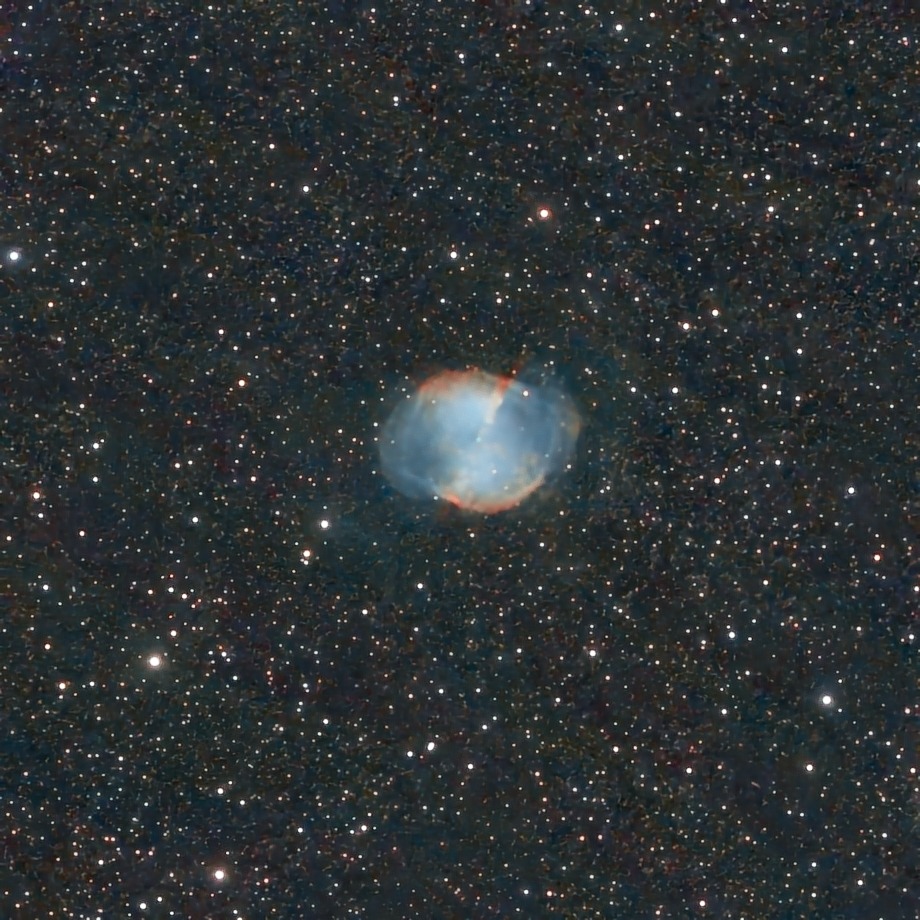
The Crescent Nebula (also known as NGC 6888 or Caldwell 27) is an emission nebula in the constellation Cygnus, about 5000 light-years away from Earth. It was discovered by William Herschel in 1792. It is formed by the fast stellar wind from the Wolf-Rayet star WR 136 (HD 192163) colliding with and energizing the slower moving wind ejected by the star when it became a red giant around 250,000 to 400,000 years ago. The nebula is a rather faint visual target, but with a telescope the nebulosity can be seen, and perhaps the rounded E shape that looks like the Euro symbol.
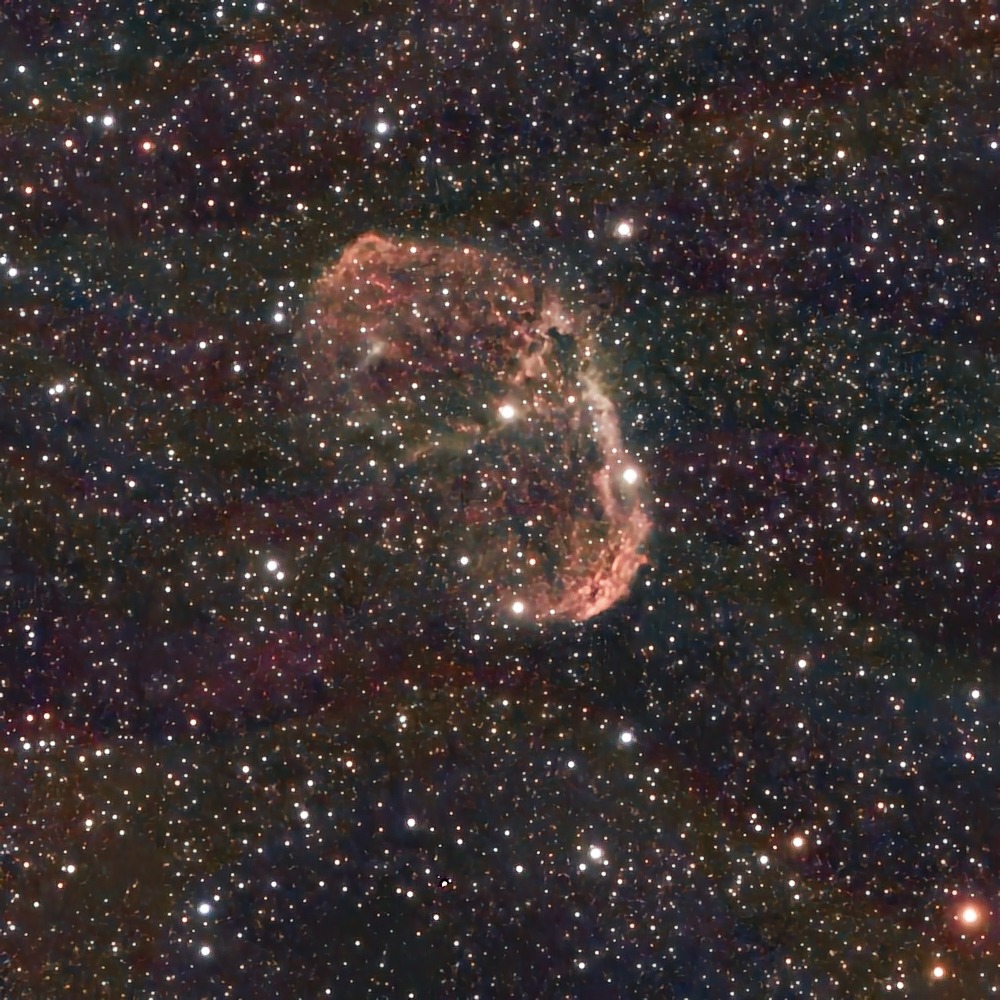
The North America Nebula (NGC 7000 or Caldwell 20) is an emission nebula in the constellation Cygnus, close to Deneb (the tail of the swan and its brightest star) in the night sky. It is named because its shape resembles North America. It is a large object and only a portion can be see here. The North America shape is pointed downward toward the right.
On October 24, 1786, William Herschel noted a “faint milky nebulosity scattered over this space, in some places pretty bright.” The most prominent region was catalogued by his son John Herschel on August 21, 1829. It was listed in the New General Catalogue as NGC 7000, where it is described as a “faint, most extremely large, diffuse nebulosity.” In 1890, the pioneering German astrophotographer Max Wolf noticed this nebula’s characteristic shape on a long-exposure photograph, and dubbed it the North America Nebula.
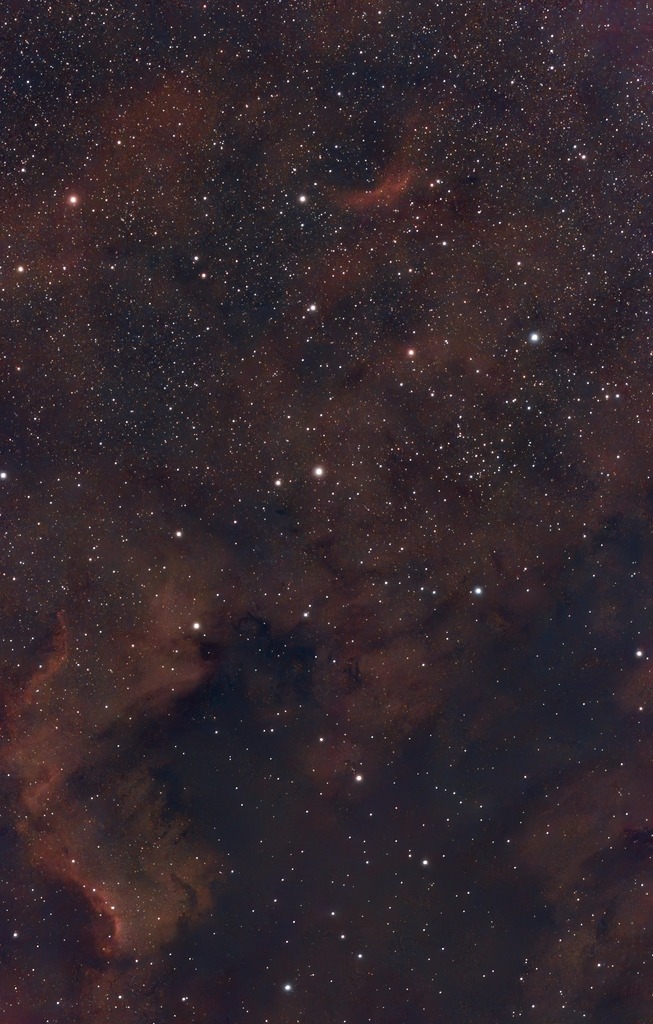
NGC 6822 (also known as Barnard’s Galaxy, IC 4895, or Caldwell 57) is a barred irregular galaxy approximately 1.6 million light-years away in the constellation Sagittarius. Part of the Local Group of galaxies, it was discovered by E. E. Barnard in 1884, with a six-inch refractor telescope. It is the closest non-satellite galaxy to the Milky Way, but lies just outside its virial radius. It is similar in structure and composition to the Small Magellanic Cloud. It is about 7,000 light-years in diameter. The irregular shape can be seen in this photograph, albeit as a faint smudge.
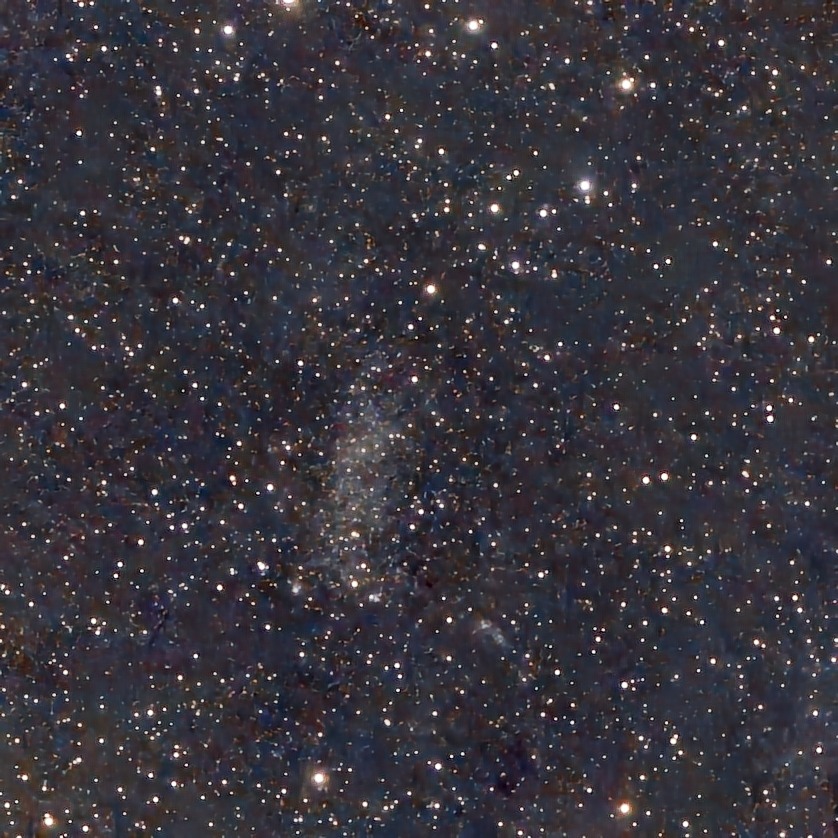
We now move on to a series of star clusters. The very pretty Messier 55 (also known as NGC 6809 or the Specter Cluster) is a globular cluster in the south of the constellation Sagittarius. It was discovered by Nicolas Louis de Lacaille in 1752 while observing from what today is South Africa. Starting in 1754, Charles Messier made several attempts to find this object from Paris but its low declination meant from there it rises daily very little above the horizon, hampering observation. He observed and catalogued it in 1778. The cluster can be seen with 50 mm binoculars; resolving individual stars needs a medium-sized telescope.
It is about 17,600 light-years away from Earth.
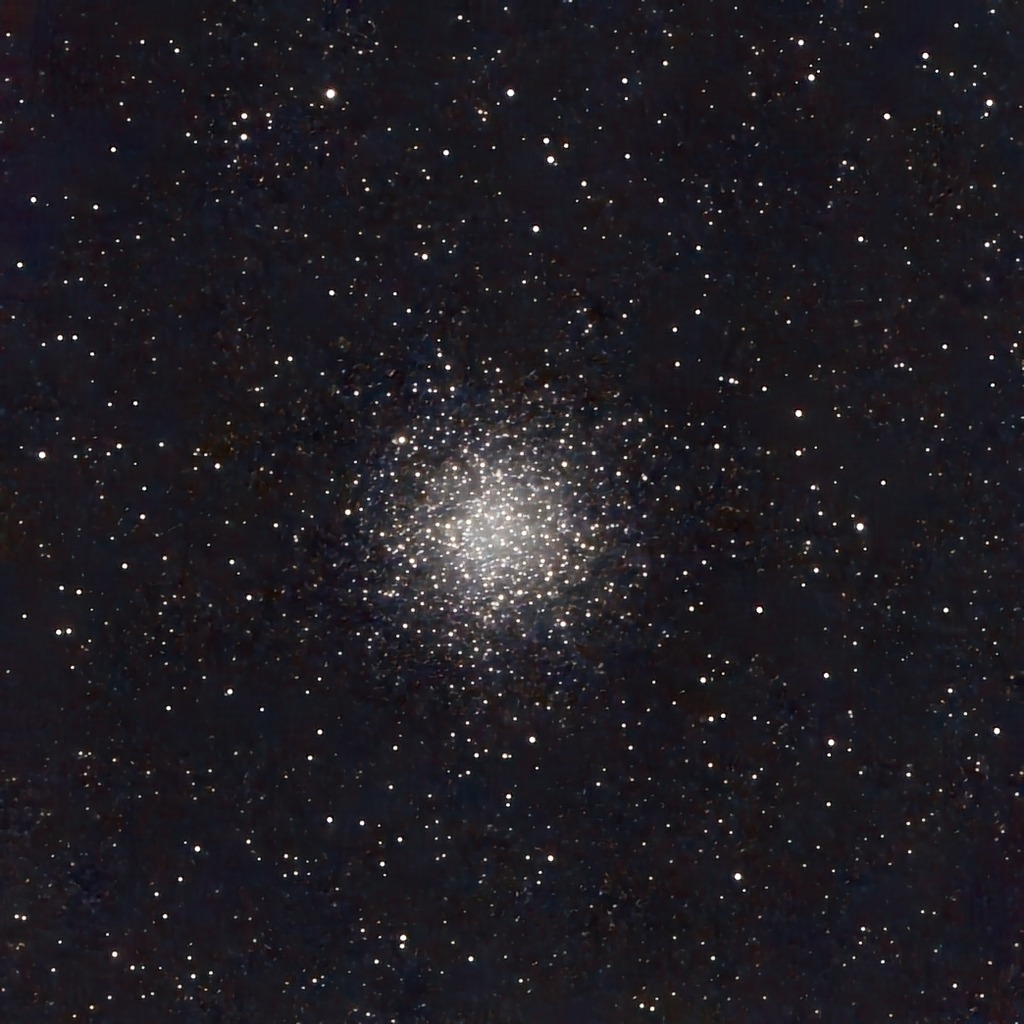
Messier 71 (also known as NGC 6838 or the Angelfish Cluster) is a globular cluster in the small constellation Sagitta. It was discovered by Philippe Loys de Chéseaux in 1745 and included by Charles Messier in his catalog of non-comet-like objects in 1780. It was also noted by Koehler at Dresden around 1775. This star cluster is about 13,000 light years away from Earth and spans 27 light-years (8 pc). The irregular variable star Z Sagittae is a member. It was once thought to be a densely packed open cluster, but modern photometry has revealed characteristics of a globular cluster. It is considered a loosely concentrated globular cluster, like M68 in Hydra.
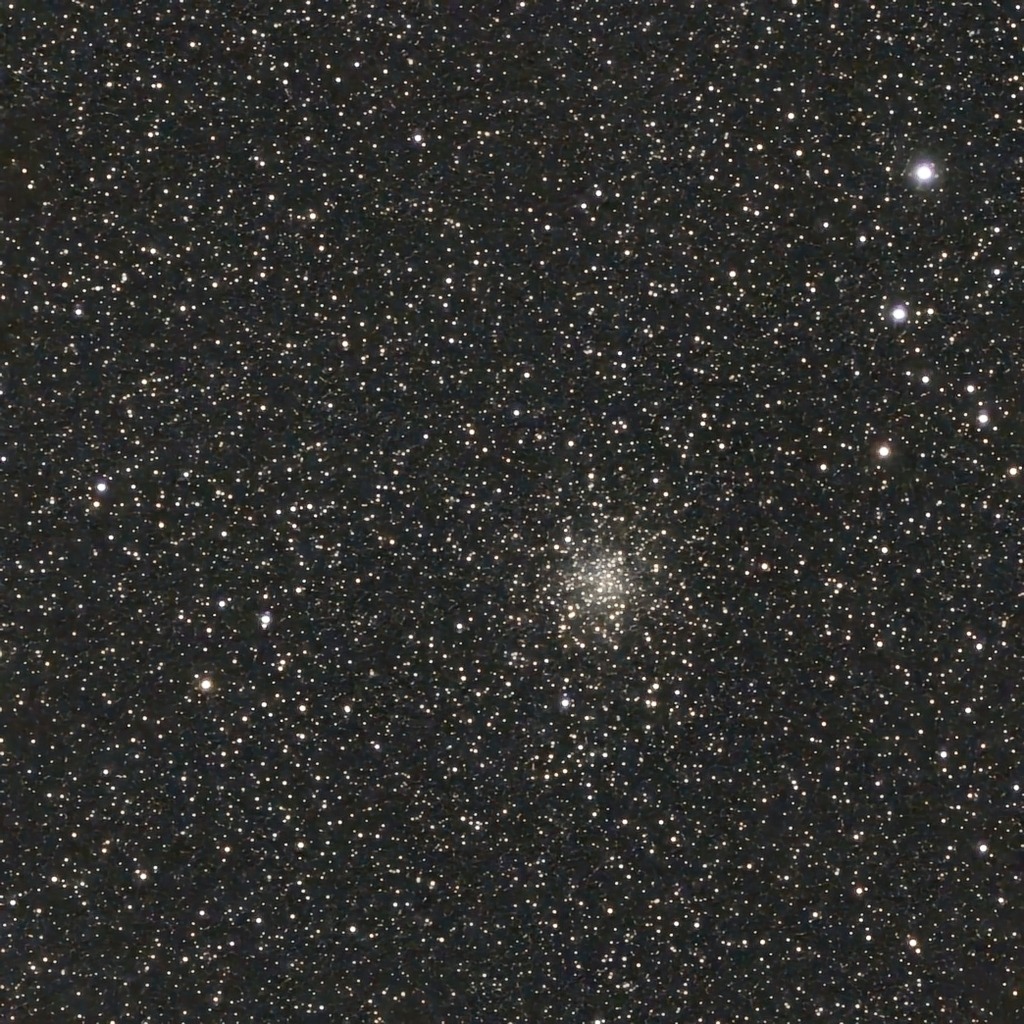
Messier 75 or M75 (also known as NGC 6864) is a globular cluster of stars in the southern constellation Sagittarius.It was discovered by Pierre Méchain in 1780 and included in Charles Messier’s catalog of comet-like objects that same year. M75 is about 67,500 light years away from Earth . Its apparent size on the sky translates to a true radius of 67 light years. M75 is classified as class I, meaning it is one of the more densely concentrated globular clusters known.
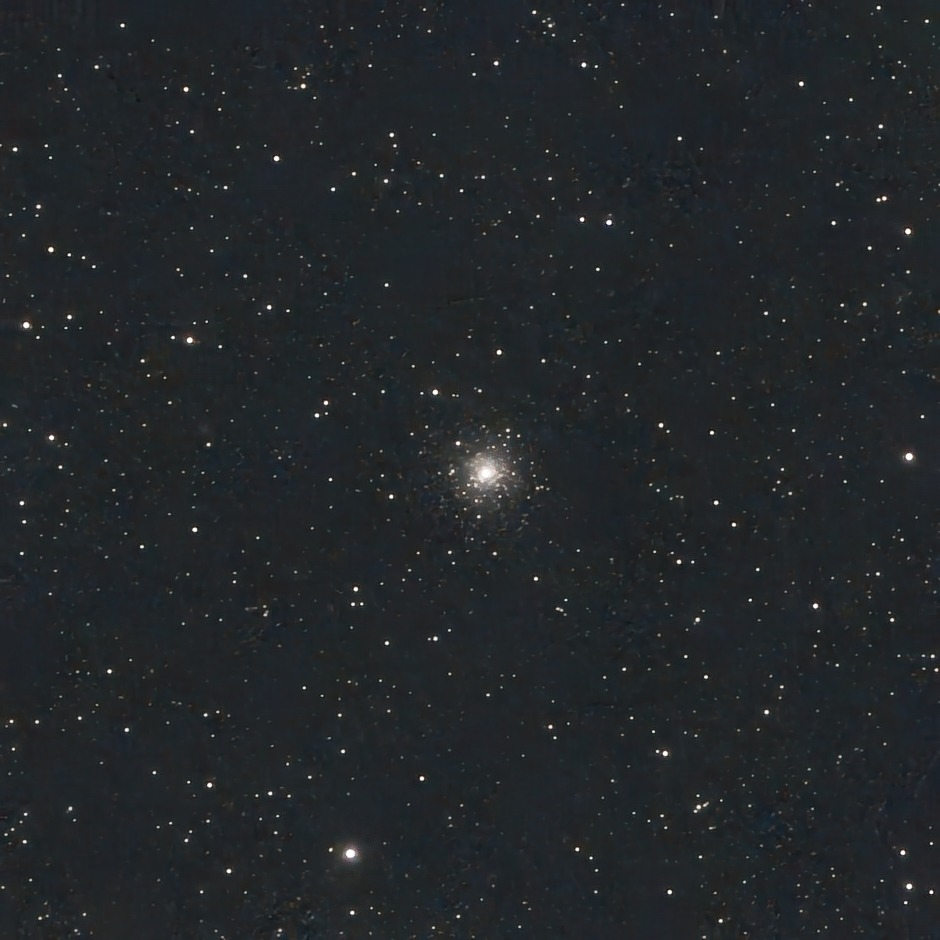
Messier 15 or M15 (also designated NGC 7078 and known as the Great Pegasus Cluster) is a globular cluster in the constellation Pegasus. It was discovered by Jean-Dominique Maraldi in 1746 and included in Charles Messier’s catalogue of comet-like objects in 1764.At an estimated 12.5±1.3 billion years old, it is one of the oldest known globular clusters. M 15 is about 35,700 light-years from Earth, and 175 light-years in diameter. It has an absolute magnitude of −9.2, which translates to a total luminosity of 360,000 times that of the Sun. Messier 15 is one of the most densely packed globulars known in the Milky Way galaxy.
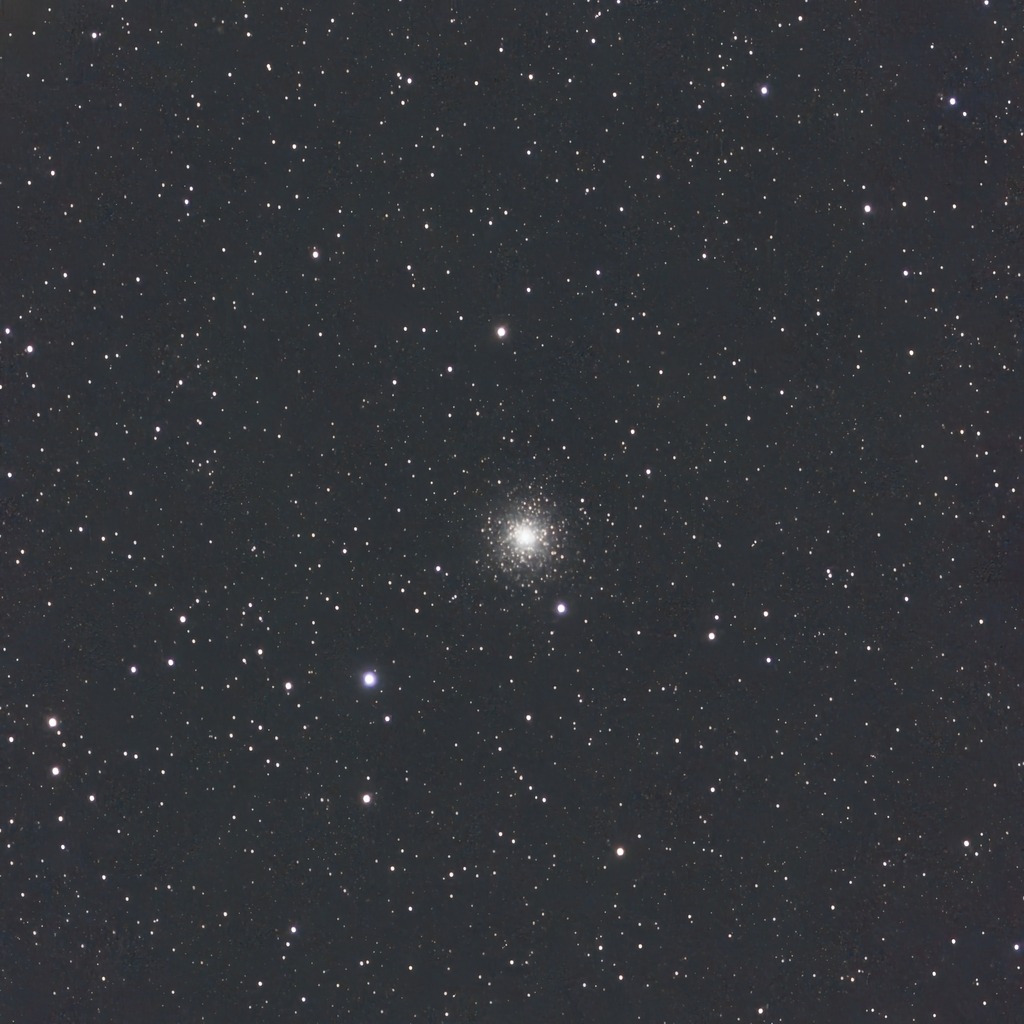
Finally, we have two more planetary nebula. Unlike the Dumbbell, these are more typical in that they appear very small. They are the bright objects in the center of the frame with a faint colored glow around them,.
The Saturn Nebula (also known as NGC 7009 or Caldwell 55) is a planetary nebula in the constellation Aquarius. It appears as a greenish-yellowish hue in a small amateur telescope. It was discovered by William Herschel on September 7, 1782, using a telescope of his own design in the garden at his home in Datchet, England, and was one of his earliest discoveries in his sky survey. The nebula was originally a low-mass star that ejected its layers into space, forming the nebula. The central star is now a bright white dwarf star of apparent magnitude 11.5. The Saturn Nebula gets its name from its superficial resemblance to the planet Saturn with its rings nearly edge-on to the observer. It was so named by Lord Rosse in the 1840s, when telescopes had improved to the point that its Saturn-like shape could be discerned. William Henry Smyth said that the Saturn Nebula was one of Struve’s nine “Rare Celestial Objects”.
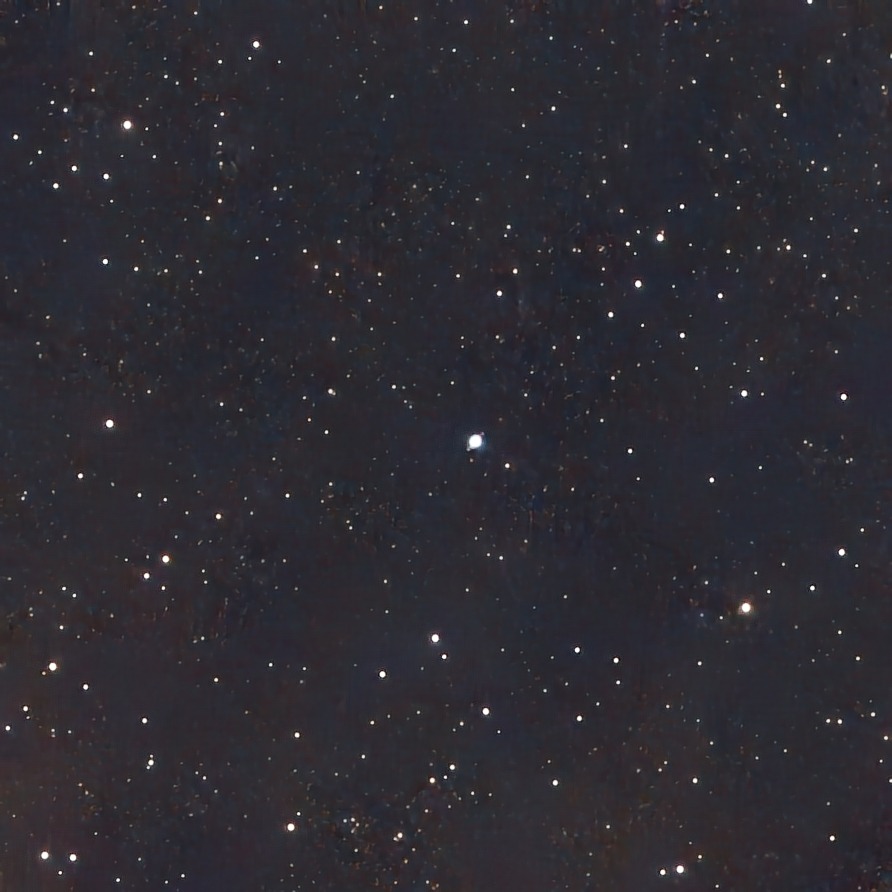
NGC 6826 (also known as Caldwell 15) is a planetary nebula located in the constellation Cygnus. It is commonly referred to as the “Blinking Planetary”, although many other nebulae exhibit such “blinking”. When viewed through a small telescope, the brightness of the central star overwhelms the eye when viewed directly, obscuring the surrounding nebula. However, it can be viewed well using averted vision, which causes it to “blink” in and out of view as the observer’s eye wanders.
